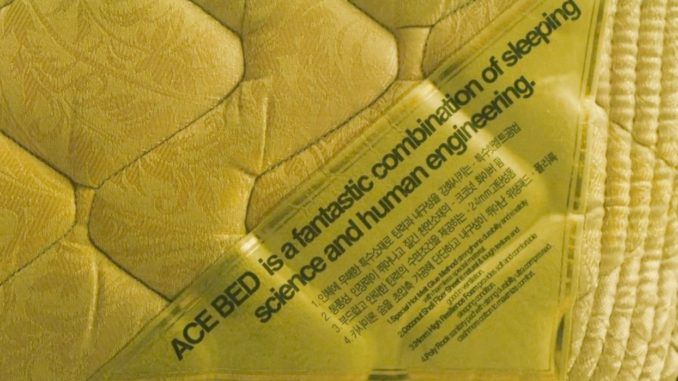
How many films are required to make a genre? Obviously, you need more than one. But is two enough? How about three? Specifically, we are speaking here about killer bed films. If you Google that, you’ll find a lot of Lifetime Original movies with titles like Killer Under the Bed or In Bed with a Killer, which are not quite what we’re looking for. No. If you want an example of what we seek, think the demise of one Mr. J. Depp in Nightmare on Elm Street. There, he is sucked down into the depths of his bed, before apparently being liquidized and sprayed enthusiastically back up, with enough force to paint the ceiling and walls of his bedroom red. However, it’s only one moment.
There are entire features based around the whole concept, and I can understand why. When we’re in bed, we are at our most vulnerable: underclad, relaxed, if not completely unconscious, and typically in the darkness. All manner of things can sneak up on you, or snag limbs that dangle incautiously over the edge. But what if the threat is even closer – if the call is coming from inside the bed, as it were. There have actually been multiple movies made with that as (more or less) their core concept, beginning with 1997’s wonderfully named Death Bed: The Bed That Eats. This was remade 25 years later, and there have been further entries subsequently.
Pick up your dressing-gown, grab a comfy pillow, and join us as we explore the small yet definitively marked genre of bed horror…
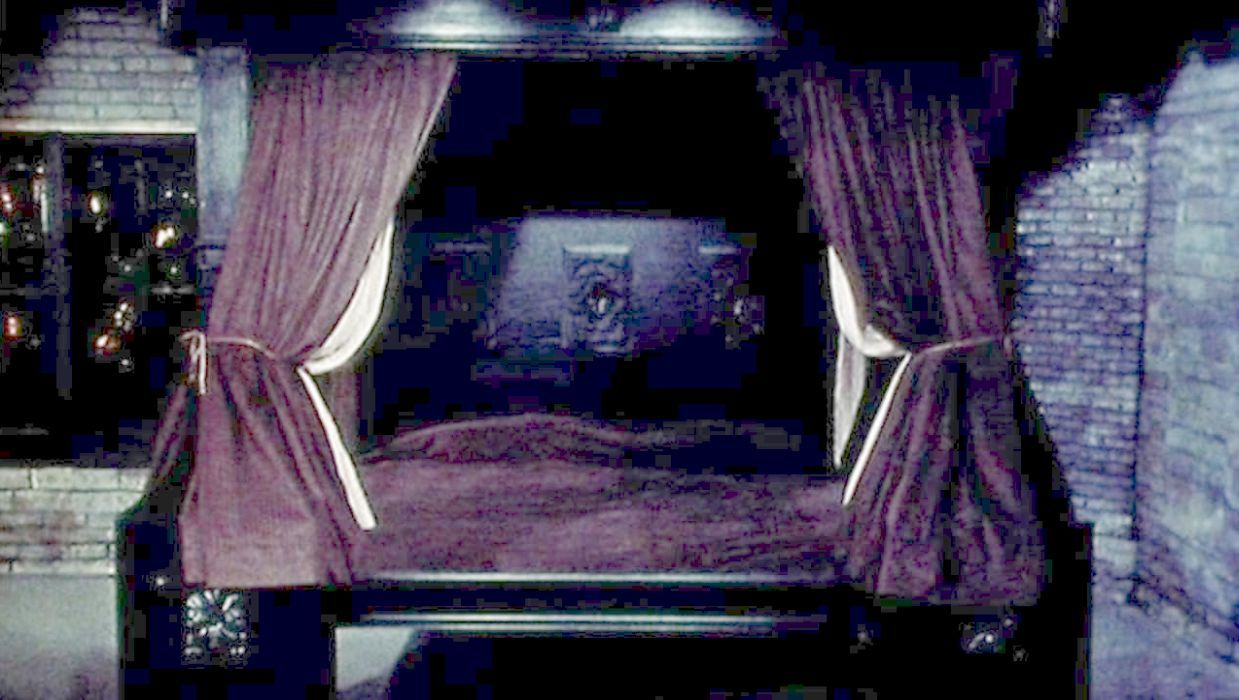
Death Bed: The Bed That Eats (1977)
Rating: C
Dir: George Barry
Star: Dave Marsh, Julie Ritter, Demene Hall, William Russ
This was the first, and remains the best known, of all killer bed movies. It’s probably the only one that attempts to execute the premise in its truest form. Others tend to have beds that you die around, but this goes full bore into the insanity of a bed which actually consumes those who lie on it, digesting them whole. There’s a sharp division in opinion regarding the results. Some critics, most notably Stephen Thrower, have an unironic appreciation for it. But on the other hand, there’s good reason more people on the IMDb have rated Death Bed 1/10 than any other score. I can see both sides. It’s undeniably imaginative, and lives up to the title surprisingly well. However, it’s clearly the work of a director with no experience, on limited resources, and given the subject matter, is kinda dull.
It owes its cult status entirely to piracy (which must come as a shock to the “Piracy is bad, m’kay?” crowd like Nathan Hanneman). The film was shot in 1972, and Barry then spent four years in post-production. But he was unable to find a distributor, and basically stuck the movie in a cupboard. However, a work print was used for an unauthorized release on video in the UK, then in other countries, and these led to the film acquiring cult status. It was until almost a quarter century later that Barry stumbled across a forum post discussing his film, that he realized anyone had ever seen it. This led to it eventually receiving an official release in 2003, though Barry remained retired from film-making, and died in November 2022 with this his sole work.
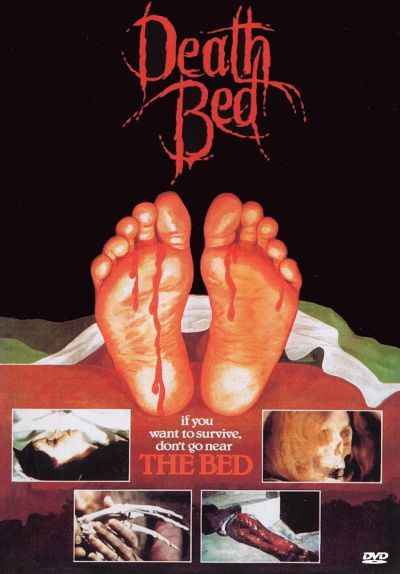 The film’s notoriety increased in 2007, when Patton Oswalt did a bit about it on his CD, Werewolves and Lollipops, though he can’t even be bothered to get the title right, adding ‘people’ to the end of it. To be honest, Oswalt comes over as rather bitter, whining that none of the four screenplays he has sold have become movies, but Death Bed did. Y’know, Patton: you could always put your money where your mouth is, and invest your own resources in making the scripts, like Barry did. I have rather more respect for someone like that. Though I must confess, I would be somewhat curious to see Oswalt’s suggested film: Rape Stove: The Stove That Rapes People.
The film’s notoriety increased in 2007, when Patton Oswalt did a bit about it on his CD, Werewolves and Lollipops, though he can’t even be bothered to get the title right, adding ‘people’ to the end of it. To be honest, Oswalt comes over as rather bitter, whining that none of the four screenplays he has sold have become movies, but Death Bed did. Y’know, Patton: you could always put your money where your mouth is, and invest your own resources in making the scripts, like Barry did. I have rather more respect for someone like that. Though I must confess, I would be somewhat curious to see Oswalt’s suggested film: Rape Stove: The Stove That Rapes People.
Death Bed begins with sixty seconds of munching sounds over a black screen, though according to Jock Brandis, who was gaffer, did FX for the film, and cameos as a priest who becomes one of the bed’s victims, “There was supposed to be stuff added in there.” This is then followed by the first of four chapters: Breakfast, Lunch, Dinner, and Just Desert (sic). We begin with a couple sneaking into the house, and becoming the first victims – along with their picnic – when they decide to make out on the bed. This also introduces us to the “narrator” (Marsh), a painter trapped by the bed, and sent to live in what I guess is another dimension behind a painting on the bedroom wall.
He appears to based on Aubrey Beardsley, and is important, because his connection to the bed allows him to vocalize its thoughts, and also fill in its back story. Though that doesn’t happen until 45 minutes in, I’ll explain it here. A demon took a human woman as a lover, but she didn’t survive their encounter. The demon’s tears went into the mattress, and made it come alive. Over the centuries since, it has drawn sustenance from whoever is unfortunate enough to cross its springs, dissolving them in its stomach acid, a process we see on multiple occasions. Though it is pretty omnivorous, capable of eating just about anything. Which may explain why, at one point, it consumes a bottle of Pepto-Bismol. Even demonic furniture gets indigestion, I guess.
The bulk of the “courses” are taken up with three woman, Diane (Hall), Sharon (Ritter), and Suzan, who also arrive at the house. Suzan doesn’t last long, but the others may stand a slightly better chance of survival because Sharon bears a resemblance to the demon’s lover – effectively, the bed’s “mother”, I guess. This gives it pause for thought, though doesn’t stop it chewing down on Diane, dragging her back in with an animated sheet lasso when she tries to crawl out of the room. Really, it has so many talents, you wonder why it hasn’t run for office or whatever. #KillerBed2024 For instance, it teleports the skull of Suzan into the garden, from which flowers immediately sprout. I wish I could do that with my leftovers.
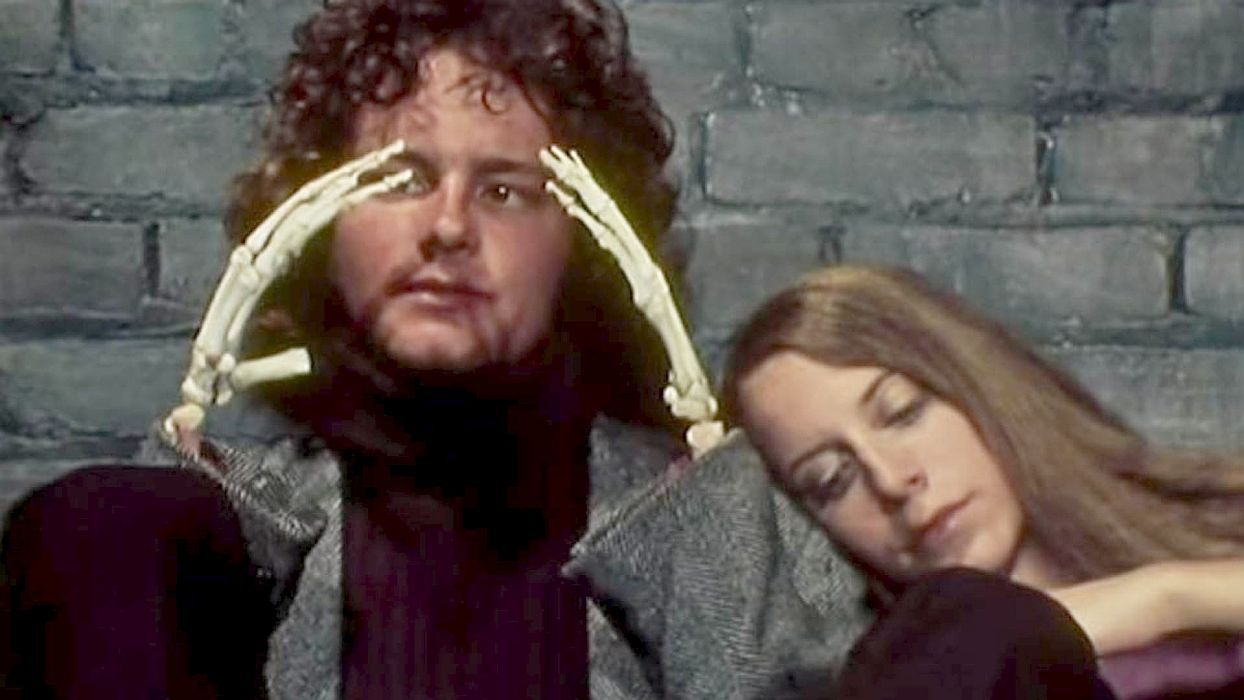 Sharon’s brother (Russ) shows up looking for her, and makes the highly ill-advised decision to stab the bed (!). This results in his hands being reduced to skeletal remains (above), though his lack of emotion at this is… impressive: he acts more like he broke a nail or something. The bed falls asleep – even demonic furniture needs naps, I guess – which lets the artist in the painting communicate with Sharon and tell her the ritual she can carry out to destroy the bed. And… I’ll defer to Wikipedia: “The woman carries out the ritual, which teleports the bed out of the room and revives the bed’s real “mother,” but at the cost of killing the surviving woman. The bed’s mother completes the ritual by having sex with the brother, causing the bed to burst into flames and die.”
Sharon’s brother (Russ) shows up looking for her, and makes the highly ill-advised decision to stab the bed (!). This results in his hands being reduced to skeletal remains (above), though his lack of emotion at this is… impressive: he acts more like he broke a nail or something. The bed falls asleep – even demonic furniture needs naps, I guess – which lets the artist in the painting communicate with Sharon and tell her the ritual she can carry out to destroy the bed. And… I’ll defer to Wikipedia: “The woman carries out the ritual, which teleports the bed out of the room and revives the bed’s real “mother,” but at the cost of killing the surviving woman. The bed’s mother completes the ritual by having sex with the brother, causing the bed to burst into flames and die.”
Okay.
All of which probably makes it sound rather more entertaining than it is. You do sense, in things such as the Pepto-Bismol, that Barry – unlike Patton Oswalt – was fully aware of how ridiculous the concept is. However, the film doesn’t buy into that full-time, and it’s the kind of situation where you either go all in or not at all. As is, the jokey elements end up weakening the times when the film wants to be taken seriously. Fair play to Barry though, for not just making a movie, but a film which is one of a kind in many ways.
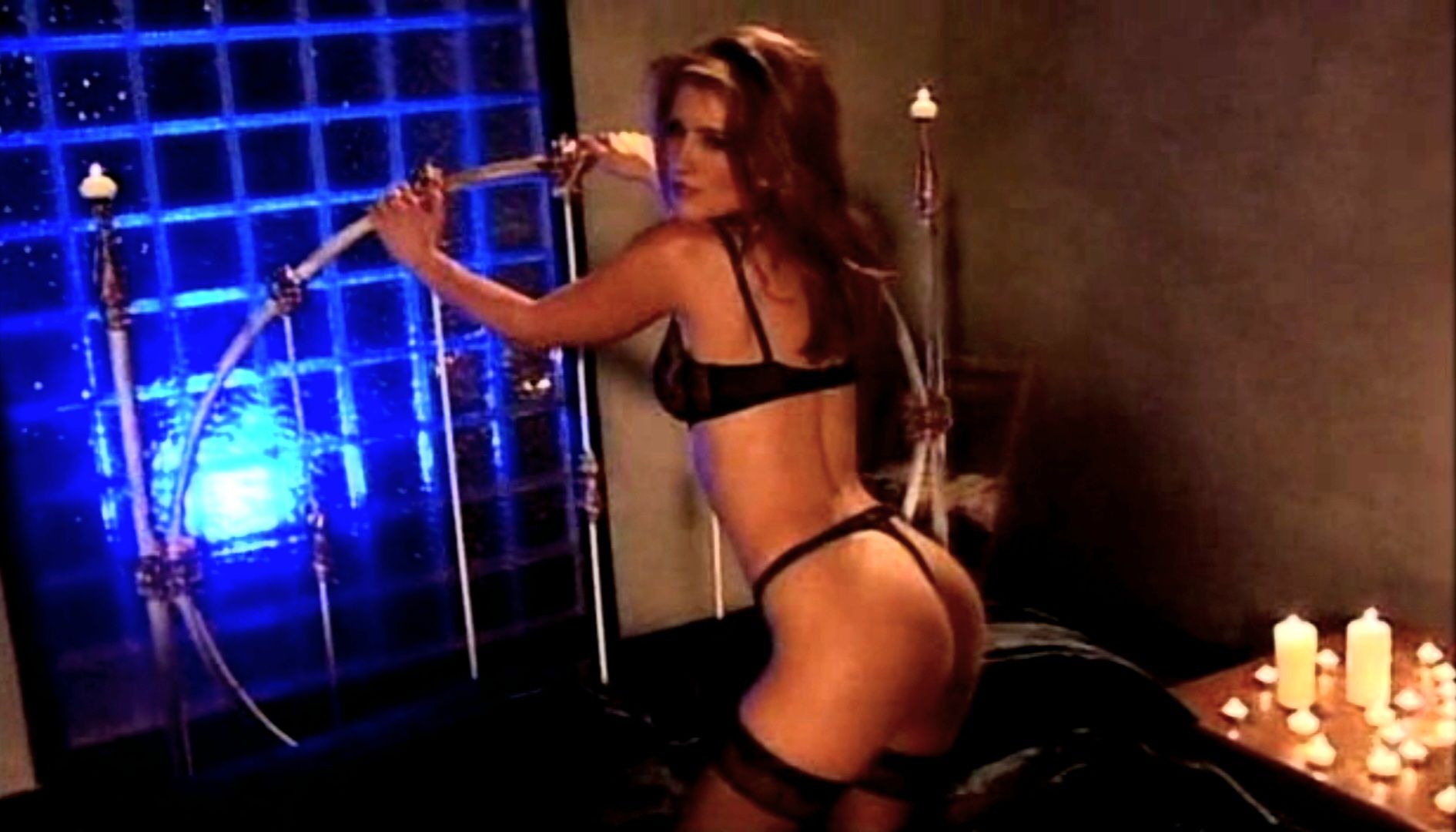
Deathbed (2002)
Rating: C
Dir: Danny Draven
Star: Tanya Dempsey, Brave Matthews, Joe Estevez, Mona Lee Fultz
I must be getting old. The most horrific thing about the bed here, was not that it was possessed by the spirit of a serial killer from the twenties, it was the utterly unacceptable lack of pillows. How can anybody sleep with fewer than three? It also seemed pretty small for two people. Particularly here in Arizona, you need the room, because doing more than brushing fingertips with your sleeping partner is an open invitation to heatstroke. That said, the couple here, photographer Jerry (Matthews) and book illustrator Karen (Dempsey) are doing a fair bit of contributing to global warming themselves, if you know what I mean, and I think you do.
They move into the top floor of a converted warehouse run by avuncular caretaker, Art (Estevez). In a long-sealed storage room they find an old, iron frame bed and decide to make use of it. It, meanwhile, decides to make use of them, implanting sexy but increasingly violent thoughts in their minds, which both Karen and Jerry begin to act out. They eventually discover the area was home to a serial killer who strangled seven women and was never caught. But is it too late for them to avoid becoming a modern incarnation of both psycho and victim? While this all comes with a “Stuart Gordon presents…” credit, the degree of his involvement is unclear. Maybe this remake of Death Bed was intended for him to direct at some point?
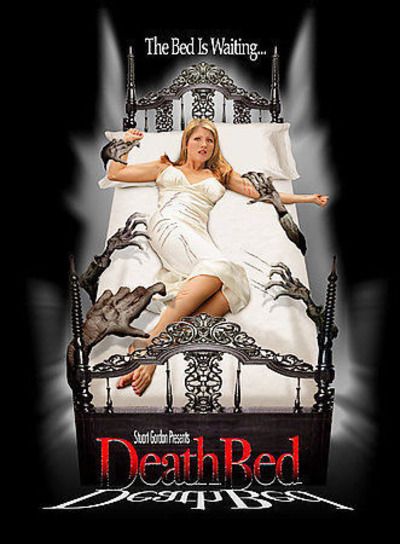 The performances here are surprisingly decent. Matthews looks like a low-rent version of Casper Van Dien, but he and Dempsey have good chemistry and feel like a real couple. Given the salacious content though, might have been better off going with an actress more comfortable with nudity? It’s kinda obvious Dempsey is not. Estevez is fun to watch, in the kind of role which works well for him. On the other hand, the script is undercooked. The audience more or less knows from the beginning what’s going on, so there’s not a sufficient sense of development. You spend 90% of the time waiting for the characters to catch up, and it isn’t at all hard to figure out things will finish in Jerry trying to kill Karen.
The performances here are surprisingly decent. Matthews looks like a low-rent version of Casper Van Dien, but he and Dempsey have good chemistry and feel like a real couple. Given the salacious content though, might have been better off going with an actress more comfortable with nudity? It’s kinda obvious Dempsey is not. Estevez is fun to watch, in the kind of role which works well for him. On the other hand, the script is undercooked. The audience more or less knows from the beginning what’s going on, so there’s not a sufficient sense of development. You spend 90% of the time waiting for the characters to catch up, and it isn’t at all hard to figure out things will finish in Jerry trying to kill Karen.
It does end in quite an energetic and gory fashion, providing a downbeat ending that does feel somewhat Gordon-esque. If there’s a moral here, it appears to be that S&M games are a gateway drug to serial slaughter, which might be a little moralistic for some. You can certainly argue for the position this is not a killer mattress movie, and I wouldn’t argue. However, given such a small field for the sub-sub-subgenre of horror films with haunted objects (furniture division, bedroom category), I’m inclined to err on the side of inclusivity. I do wonder what it might have been like with Gordon at the helm, perhaps starring Barbara Crampton. Likely more memorable than this low-budget slice of just about competence.
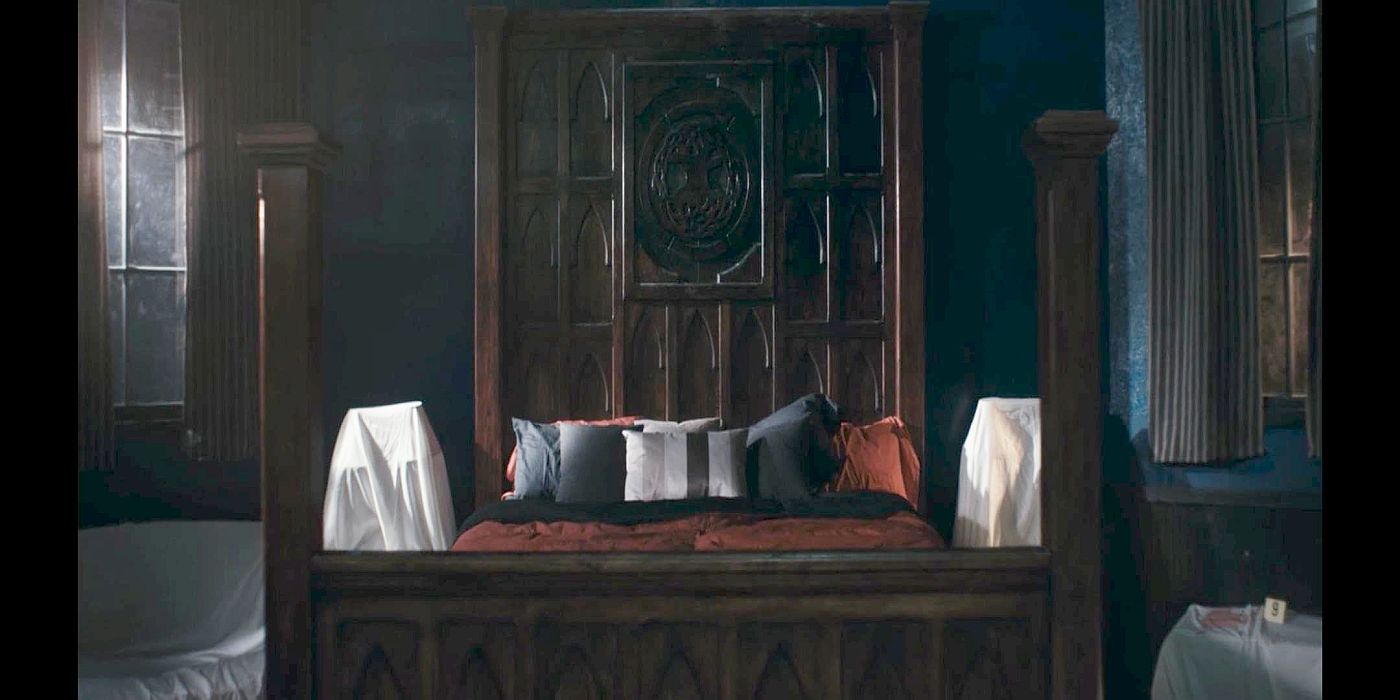
The Dwelling (2016)
Rating: C+
Dir: Jeff Maher
Star: Colin Price, Alysa King, Gwenlyn Cumyn, Dennis Andres
a.k.a. Bed of the Dead
A fire at a sex-club leaves behind five corpses, and brings alcoholic detective Virgil (Price) onto the scene. Things turn weird, as the cause of death in some cases is not smoke inhalation or burns – it’s things like disembowelment. We flash back to meet two couples, going to a sex-club because it’s Ren’s (Cumyn) birthday. He’s hoping for some nice swinging action, but this is stymied when he discovers no rooms are free. Well, except for #18, and that one is… unavailable. He eventually convinces the receptionist to give it to him and his party, but after the quartet climb onto the large, antique bed, it’s not long before things start to go considerably more wrong.
Thanks to a prologue, the audience know the bed is the problem. It was made of wood from a tree, watered by human sacrificial blood, and… Well, while the movie is vague on detail, it appears something cult-related imbued it with a very particular set of skills. One victim gets dragged under the bed. Someone else suffers the disembowelment mentioned above. That leaves two people, playing a real-life version of “The Floor is Lava”. There is hope though, for bizarrely, their phone connects to Detective Virgil, two hours in the future. Once he overcomes his natural scepticism, he may be the only person capable of looking into the bed’s murderous history, figuring out the rules by which it operates, and – just maybe – saving the two bed-mates.
 The alternate title makes more sense to me than the original, whose meaning is still opaque. The film is at its best when being simple and straightforward: how do you survive in this situation? However, the script feels a need to tack on a punishment aspect, in that the bed is a vigilante. Yes, you read that right: it’s intent on punishing the guilty for their sins. The problem is that, the resulting need to fill in back stories for just about everyone in the film, takes focus away from the basic survival story. This includes Virgil, whose drinking is the result of guilt following his shooting of a black teenager, after the murder of his girlfriend by another black man.
The alternate title makes more sense to me than the original, whose meaning is still opaque. The film is at its best when being simple and straightforward: how do you survive in this situation? However, the script feels a need to tack on a punishment aspect, in that the bed is a vigilante. Yes, you read that right: it’s intent on punishing the guilty for their sins. The problem is that, the resulting need to fill in back stories for just about everyone in the film, takes focus away from the basic survival story. This includes Virgil, whose drinking is the result of guilt following his shooting of a black teenager, after the murder of his girlfriend by another black man.
It’s all definitely a case of too much information. I will say, the lengthy set-up does pay off at the end. Though even here, there’s then an unnecessary coda, that takes away more than it adds on. On the plus side, the effects are good to very good, particularly around the deaths. I would rather have been told about the bed’s history, and the motives of those who crafted it. I’m more interested in its history, such as how it ended up in a cursed room at a sex-club, rather than why Virgil has climbed inside the bottle. It’s rather telling that the bed is less wooden than some of the characters. And probably more fun to be around, truth be told.
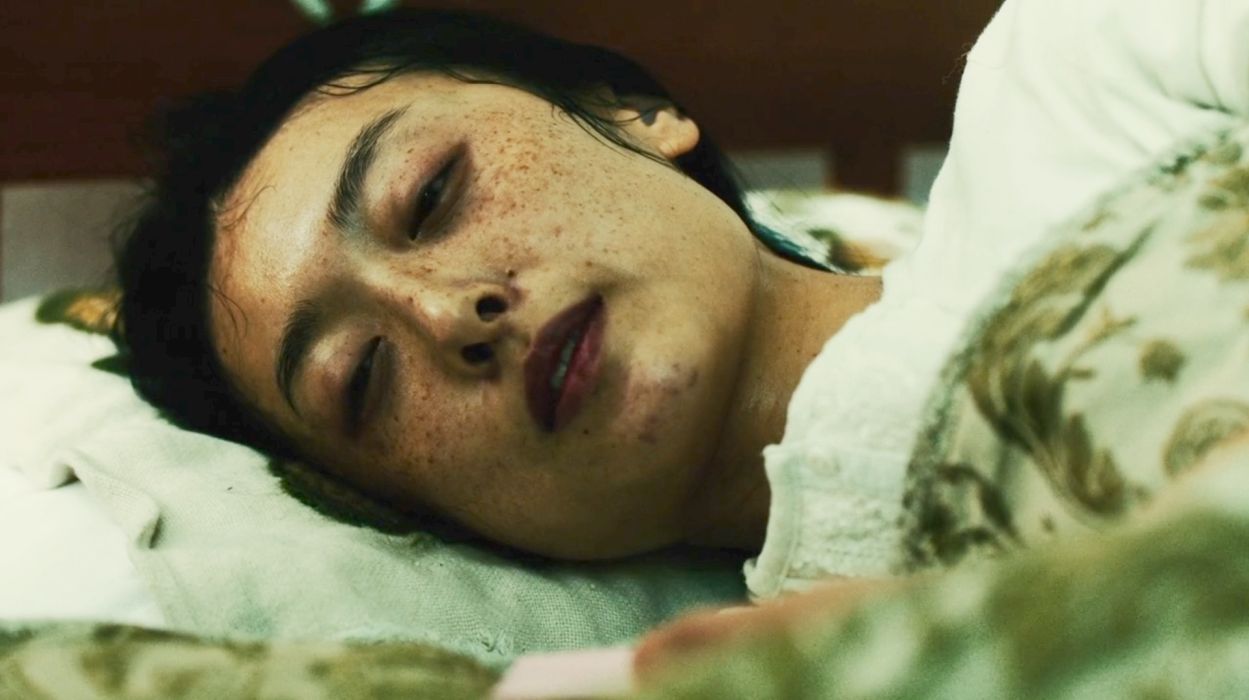
The Fifth Thoracic Vertebra (2022)
Rating: D
Dir: Park Sye-young
Star: Moon Hyein, Haam Seokyoung, On Jeongyen, Jung Sumin
I’m not sure what I was expecting, based on the poster and Tubi synopsis of “A creature born inside an abandoned mattress feasts on its victims’ vertebrae while struggling to break free from the bed and its past.” Probably something along the lines of Killer Sofa – a tongue in cheek B-movie, which at least tries to have fun with a patently ridiculous premise. Instead, what you actually get is a prime slice of film festival art-wank, in which boring characters go all “Poor me” over their uninteresting lives, while lying on top of a mouldy mattress. Events unfold over a period of more than thirteen hundred years. By the end, this felt like it had taken place in real time.
I guess the creature is an appropriate one, being a manifestation of the general sense of gloom and alienation, from which everyone here seems to suffer. If Morrissey was a fungus – and thinking about it, that would explain a lot – he’d be the one we find here. It begins with a caption discussing their lifespan, saying they can live up to a month, “but there are always variables.” The first humans we meet are couple Gyeol (Moon) and Yoon (Haam), who are moving into an apartment together, and bring the mattress, apparently with its parasitic inhabitant already gestating within it. When they break up a few months later, the mattress begins to be passed around, despite an ever-increasing stain which would certainly put me off it.
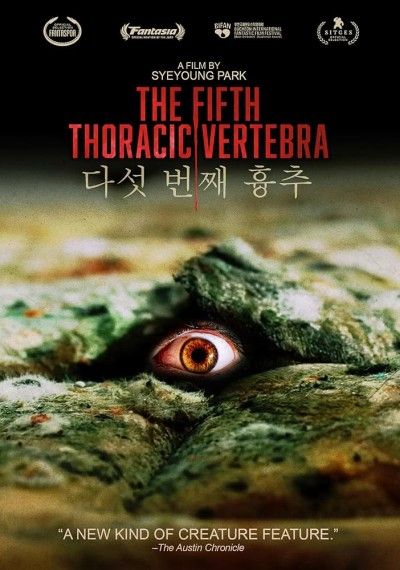 Still, I guess if you’re a woman dying in her apartment (top), you probably aren’t too bothered – and that’s one of the people who inherits the mattress and its passenger. Does it seek out particularly sad people? Or are they sad, in part because they are sleeping on dodgy, second-hand bedding? That’s about the depth of the philosophical questions explored here. The “feasting” mentioned in the synopsis is hardly that: a couple of people complaining about a stabbing pain in their lower back. Which is basically me on a Monday morning. Eventually, the creature seems to take on humanoid form, all posting letters ‘n’ stuff (I’m not kidding). Though this feels more like a cop-out, because the creators couldn’t be arsed with creating an actual monster.
Still, I guess if you’re a woman dying in her apartment (top), you probably aren’t too bothered – and that’s one of the people who inherits the mattress and its passenger. Does it seek out particularly sad people? Or are they sad, in part because they are sleeping on dodgy, second-hand bedding? That’s about the depth of the philosophical questions explored here. The “feasting” mentioned in the synopsis is hardly that: a couple of people complaining about a stabbing pain in their lower back. Which is basically me on a Monday morning. Eventually, the creature seems to take on humanoid form, all posting letters ‘n’ stuff (I’m not kidding). Though this feels more like a cop-out, because the creators couldn’t be arsed with creating an actual monster.
Park does have a decent visual eye, and the soundtrack occasionally makes an impression. At one point, it goes into a pleasing synthesizer rendition of Debussy’s Claire de Lune, which had me subsequently reaching for my copy of Tomita’s Snowflakes are Dancing. However, the joys to be had otherwise are scant, and I found myself eagerly anticipating Tubi’s commercial breaks, as a respite from the grinding melancholy. I guess if you’re after an angst-ridden insight into the human condition, this might be for you. Me? I just wanted to see a mattress eating people: apparently, that’s too much to ask. The 65-minute running time seemed considerably longer – understandable, considering you are basically watching fungi grow, and by the end apparently replacing humanity entirely on planet Earth. I, for one, welcome our new mushroom overlords.
